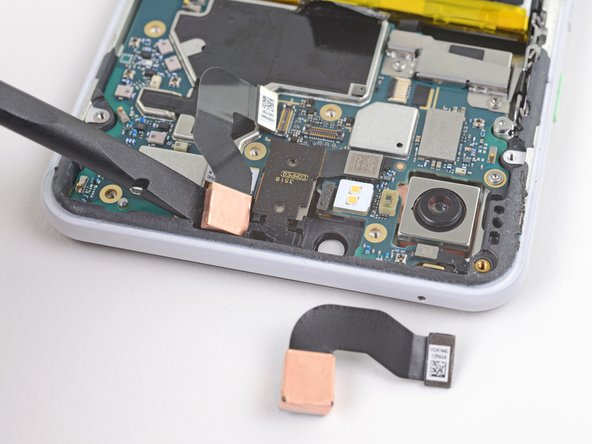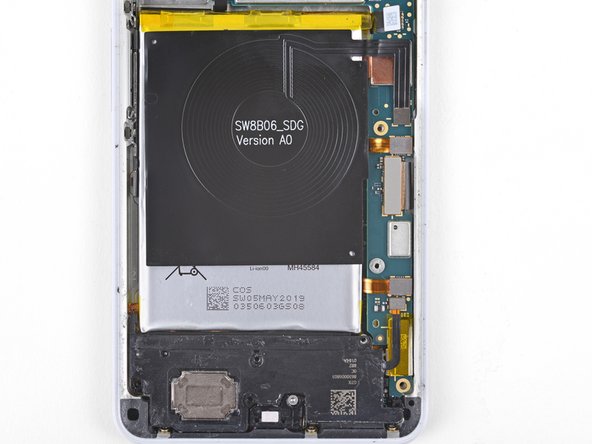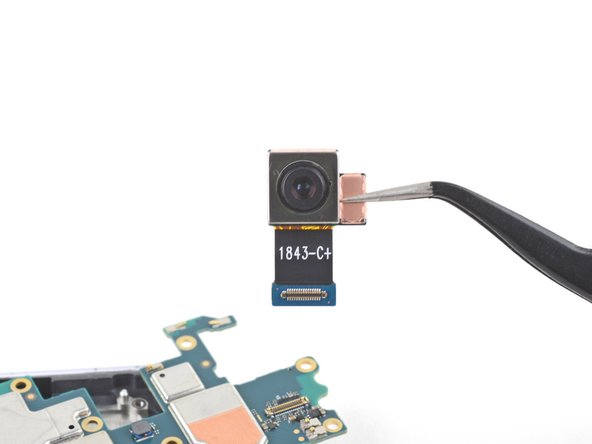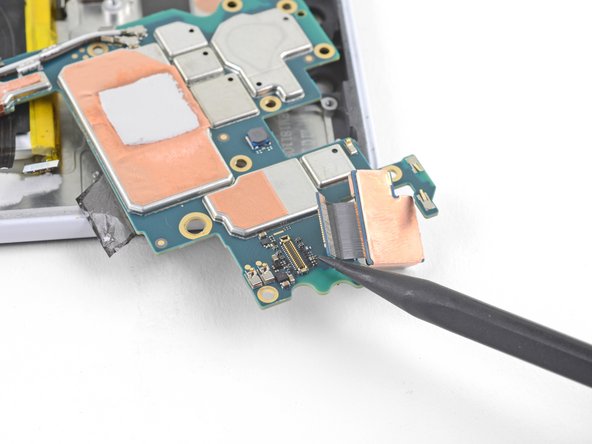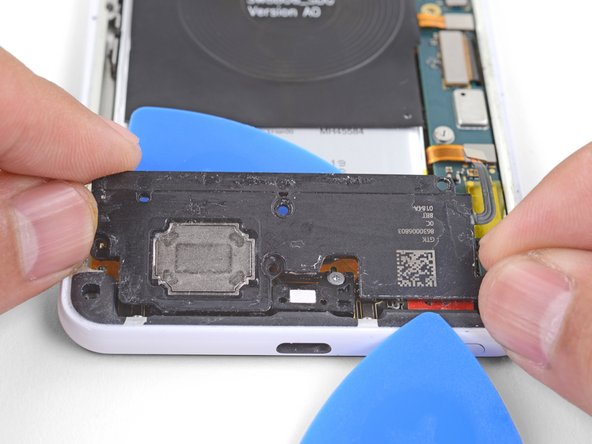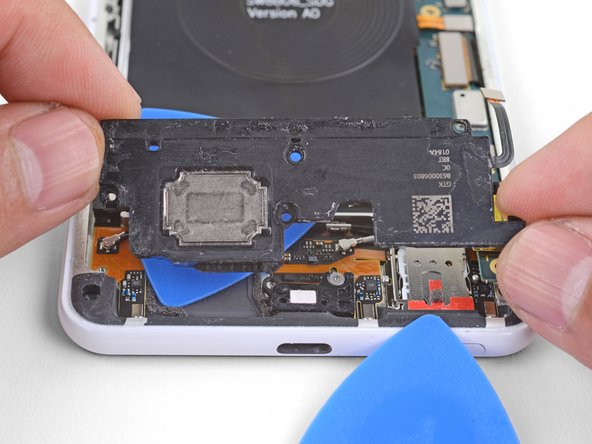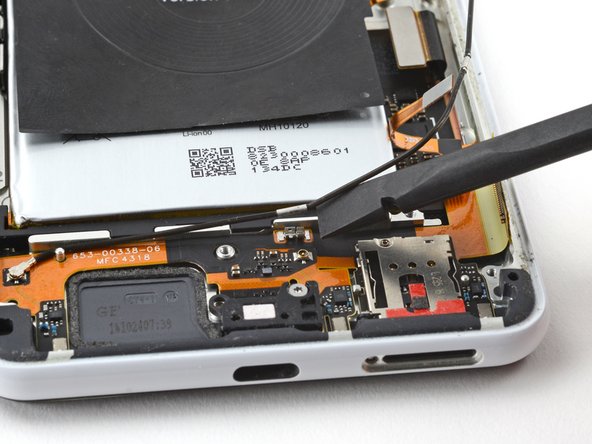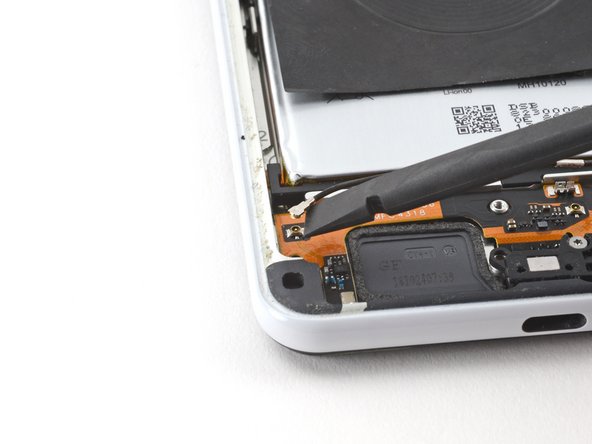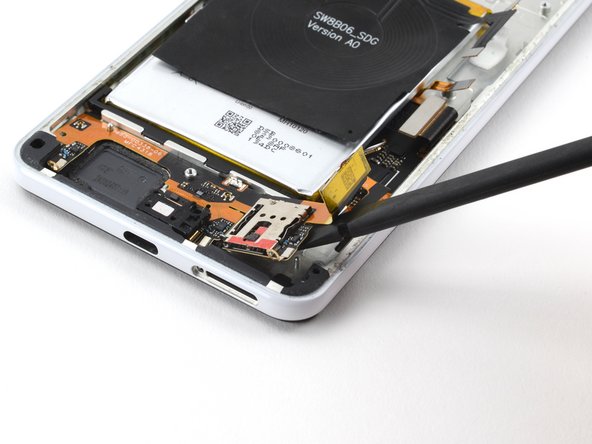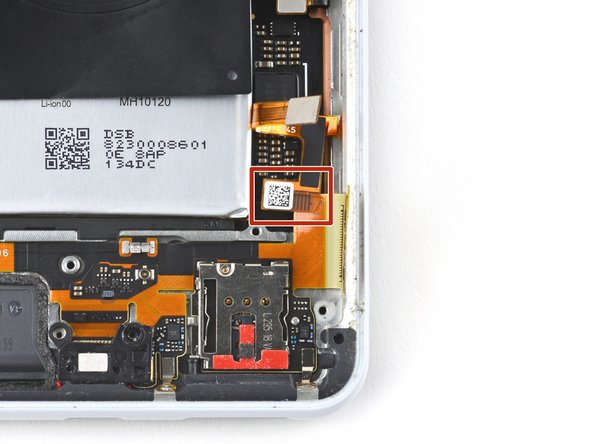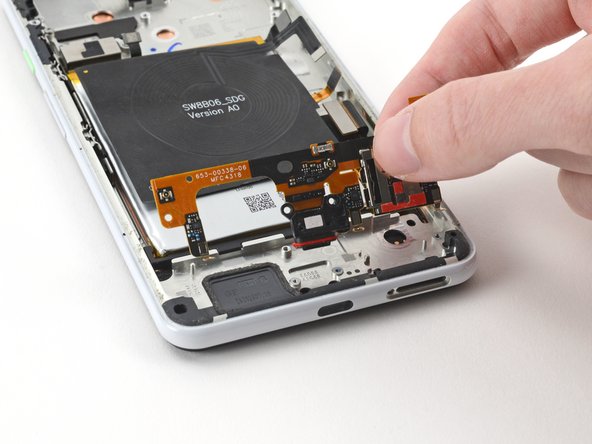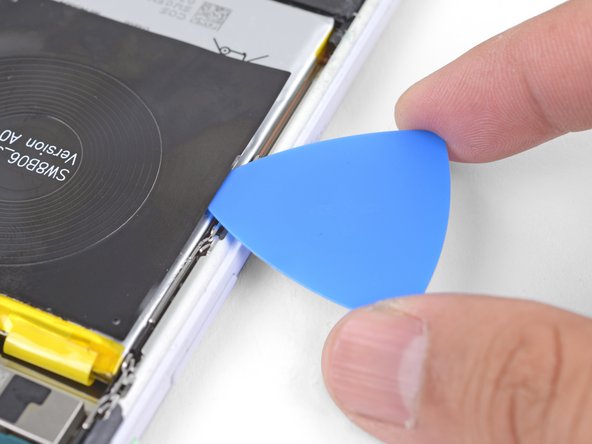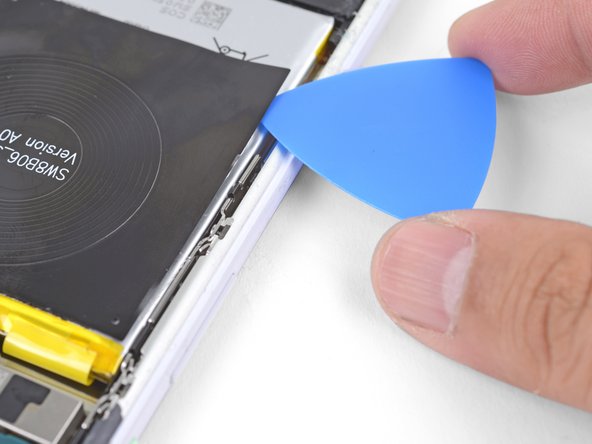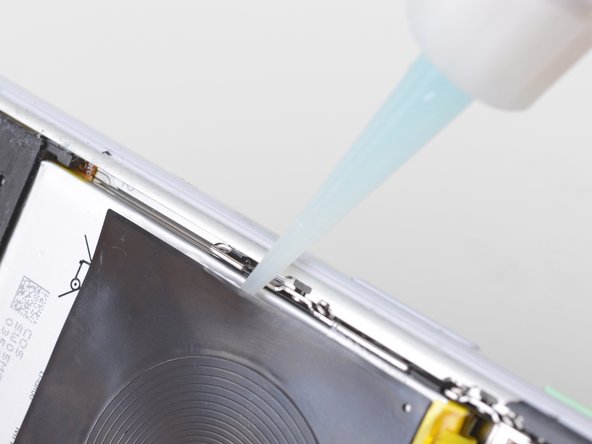How to Replace Google Pixel 3 XL Screen Assembly – DIY Guide
Duration: 45 minutes
Steps: 67 Steps
This repair guide comes straight from the talented folks at iFixit and hasn’t been given the thumbs up from Google. Want to dive deeper into our repair guides? Check it out here!
This guide is all about the authentic Google screen assembly. Let’s get to work!
This repair guide has been crafted by the talented team at Salvation Repair, and while we’re not officially in cahoots with Google, we’re here to help you out! Dive in to discover how to swap out the screen assembly on your Google Pixel 3 XL. We’re focusing on the genuine Google screen assembly, which combines the screen and frame into one neat package. Just make sure you’ve got the right part before you jump in! A few of the photos in this guide may feature a different model, so you might notice minor visual differences, but no worries—they won’t mess with the repair process.
Step 1
– Grab your trusty SIM eject tool, tiny bit, or even a straightened paper clip and find that little hole at the bottom edge of your phone.
– Give it a firm push and watch the tray pop out like magic!
Step 2
– Let’s get started by removing the SIM tray from your phone. This is a simple step to begin your repair journey with Salvation Repair.
Step 3
You can also use a hair dryer, heat gun, or hot plate to get things going, but watch out for overheating that phone! Both the display and internal battery can get a bit too hot to handle. Keep it cool and if you need help, you can always schedule a repair.
– Warm up that iOpener and give it a cozy spot on the right edge of the back cover for about a minute.
– While you’re letting it work its magic, keep an eye out for these important spots on the back cover:
– Strong adhesive—there are some hefty patches of sticky stuff hanging out near the bottom of the phone.
– Fingerprint sensor cable—be super careful not to slice through this little guy while you’re prying it open.
Tools Used
Step 4
– Grab a suction cup and stick it to the warmed edge of the back cover, keeping it nice and close to the edge.
– Give that suction cup a strong, steady pull to create a little gap.
– Now, slide the point of your opening pick into that gap you just made.
– If you’re finding it tough, don’t sweat it! Depending on how old your phone is, it might just need a bit more love. Try applying some heat to the edge and give it another go!
Step 5
– Slice and dice that adhesive with your opening pick! Work that right edge like a pro. Just slide it along.
– Heads up! That gunk gets sticky when it cools down. Zap it with some heat again if it starts putting up a fight.
– Once you’ve liberated that edge, slip in an opening pick like a bookmark. This’ll keep things open for ya.
Step 6
– Time to warm things up! Apply a heated iOpener to the bottom of the back cover for about a minute.
Tools Used
Step 7
Take your time and carefully slice around the corner to avoid damaging the panel. If you hit a tough spot, just reapply some heat and you’ll be back on track. Remember, patience is key when it comes to delicate repairs. If you need help, you can always schedule a repair
– Grab your trusty opening pick and gently glide it around the bottom right corner, then keep it moving along the bottom edge of your phone.
– Once you’ve made some progress, tuck a pick into the edge to keep that adhesive from getting all clingy again.
Step 8
– Keep working that heat and slice action until all the edges of the phone are freed.
– Take it easy when you slice along the left edge. If the pick gets stuck near the top, you might have bumped into the fingerprint sensor. Just back off a tiny bit and try again.
– Make sure to cut through the chunky adhesive bits near the bottom and right edge of the phone.
Step 9
– Carefully lift the right edge of the back cover – it’s time to get inside.
– Now, use an opening pick to gently cut through any remaining adhesive along the edges. If you need help, you can always schedule a repair
Step 10
Give that fingerprint sensor cable some breathing room and make sure it doesn’t get pinched!
– Gently lift the right edge of the back cover and let the panel rest against the left side of your phone. It’s like giving your phone a little hug!
– Now’s the perfect time to power on your phone and check all the cool features before sealing it up. Just remember to turn it off completely before diving back in!
– As you put everything back together, make sure to follow this guide for sticking on those custom-cut adhesives for your back cover. You got this!
– If you’ve swapped out the fingerprint sensor, don’t forget to use this nifty software tool to help your phone recognize the new addition.
Step 11
– Use tweezers to gently pry up the yellow tape covering the fingerprint sensor connector. If you’re not feeling confident, don’t worry – you can always schedule a repair and let the pros at Salvation Repair handle it for you.
Tools Used
Step 12
Watch out for those tiny metal bits on the flex cable! Don’t let your tweezers get too friendly with them – a little mishap could lead to some serious short-circuiting. Take your time and be gentle! If you need a hand, you can always schedule a repair
– Grab a trusty spudger and with ninja-like precision, lift up the little black lock bar on the fingerprint sensor’s socket—just be gentle, alright?
– Hold the cable’s tab snugly with your fingers or tweezers and carefully wiggle that flex cable out of the socket like it’s doing a slow cha-cha.
Step 13
– Alright, let’s get that back cover off!
– Now, to make sure you’re good to go, here’s a handy guide for applying that new adhesive. You got this! If you need help, you can always schedule a repair
Step 14
– Undo these four T3 screws that are holding the metal cover bracket in place:
– As you work, keep track of each screw so you can return it to its rightful spot.
– Three screws measure 4 mm in length
– One screw measures 3 mm in length
Step 15
– Time to get started. Use the flat end of a spudger to carefully pry up the top right edge of the metal bracket – it’s time to set it free.
– Now that it’s loose, go ahead and remove the metal cover bracket. You’re making great progress. If you need help, you can always schedule a repair
Tools Used
Step 16
Be careful when disconnecting the battery – using metal tools can cause a short circuit, so let’s play it safe! If you need help, you can always schedule a repair
– Grab your trusty spudger and gently pry up to disconnect the battery connector from its cozy little socket.
– Give that battery cable a little bend so it won’t accidentally make contact with the socket again. Safety first!
Tools Used
Step 17
– Let’s loosen up those screws holding the motherboard shield in place! You’ll find five of them:
* Three are 4 mm long.
* Two are 3 mm long.
If you need help, you can always schedule a repair
Step 18
– Let’s get started by removing the motherboard shield. This is the first step in giving your device a brand new lease on life. If you need help, you can always schedule a repair
Step 19
– Alright, let’s do this! Carefully remove those three 3 mm long T3 screws holding down the front camera bracket. You’re on the right track! If you need help, you can always schedule a repair.
Step 20
– Gently lift the front camera bracket out of its cozy spot, and you’re one step closer to success!
Step 21
Be gentle when working around the sockets, as the tiny surface-mounted components nearby can be easily dislodged. If you need help, you can always schedule a repair
– Gently wiggle the spudger tip to lift and unplug the cameras from their cozy motherboard nests.
Tools Used
Step 23
– Say goodbye to those front-facing cameras! It’s time to carefully remove them and make way for some exciting upgrades. If you need help, you can always schedule a repair.
Step 24
Unscrewing this little guy will give you a bit more freedom to maneuver when you’re taking out the motherboard. Just a little nudge in the right direction!
– Unscrew the 4 mm T3 screw that’s holding down the top-right corner of the loudspeaker. You’ve got this!
Step 25
– Alright, time to give those tiny screws a little wiggle room. Grab your trusty T3 screwdriver and pop out the two 3mm long screws that are holding down the button array connector bracket. You’re doing great!
Step 26
– Time to say goodbye to the button array connector bracket! Just gently remove it and keep moving forward.
Step 27
– Grab your trusty spudger and give it a gentle nudge to lift up the earpiece connector from its cozy home on the motherboard. It’s easier than it sounds!
– Now, with the utmost care, peel back the connector pad that hugs the earpiece socket. We’re almost there!
Tools Used
Step 28
– Alright, let’s gently get those connectors unplugged. Grab your spudger (that handy tool you’ve got) and carefully pry up these connections:
– Microphone connector
– Button array connector
– Earpiece connector (it should already be loose – good job!)
– If you need help, you can always schedule a repair
Tools Used
Step 29
– Now, let’s get these connectors unhooked! Grab your trusty spudger and gently pry up the following:
– Charging coil connector
– Left squeeze sensor connector
– Display connector
– Right squeeze sensor connector
– Loudspeaker connector
– USB-C port connector
Tools Used
Step 31
If the earpiece speaker springs loose (like in the third photo), just align and gently press the module back into place.
– Let’s pop that motherboard out! Start by sliding the tip of your spudger under the motherboard, right near the camera on the back.
– Now, gently lift to free the motherboard from its little nook.
– Careful with the earpiece speaker cable – it’s a bit delicate. As you slide the motherboard out, try pressing on the earpiece module with your finger to keep it from popping open. You got this!
– If the motherboard is feeling stubborn, double-check that all the connectors are disconnected. Then try again, you’ve almost got it!
Tools Used
Step 32
Hey there! Just a friendly reminder: leave the motherboard where it is—it’s happily connected to your phone and doesn’t want to go anywhere!
– As you tackle this step, be sure to keep some wiggle room on those antenna cables that are connected to the bottom leg of the motherboard.
– Gently lift the top part of the motherboard just enough to pop it out of its snug little spot.
– Now, give that left edge of the board a twist and swing it out of the phone, resting it nicely on the right edge.
Step 33
Handle those cables with care! They’re a bit delicate, and those clips can be quite clingy. Just take your time and gently pry near the clip bases for the best results.
– Time to get those antenna cables loose. Use a spudger to carefully pry them up from their motherboard clips. Remember, gentle is key – you’re not trying to force them out, just coax them free.
Tools Used
Step 35
Got a shiny new motherboard? Awesome! Just follow these steps to move that rear-facing camera over like a pro!
– First things first! Take a good look at your new replacement part and compare it with the original. You might need to move over some components or peel off those sticky backings from the new part before you dive into the installation.
– Grab your trusty spudger and use its pointy tip to gently pry up and disconnect the rear-facing camera from its cozy spot on the motherboard.
– Now, carefully remove the rear-facing camera and pop it onto your shiny new motherboard. You’ve got this!
Tools Used
Step 36
If you’ve already taken out the motherboard, you’ll notice the top right loudspeaker screw is already out of the way. Now you’re making progress – keep going! If you need help, you can always schedule a repair
– Let’s get started by removing the four T3 screws that hold the loudspeaker in place:
– You’ll need to take out three 4 mm long screws
– And one 3.9 mm long screw – almost there! If you need help, you can always schedule a repair
Step 37
– Let’s give that loudspeaker a little nudge! Gently slide the tip of your opening pick under the bottom right corner of the loudspeaker.
– Now, slide that pick along to loosen up the right side of the loudspeaker. You got this!
Step 38
– Carefully slide the tip of your opening pick underneath the top edge of the loudspeaker, just below the battery. You’re doing great!
– Gently slide the pick in to cut through the adhesive gasket hiding beneath the loudspeaker. Keep it steady!
Step 39
– Gently lift the loudspeaker out, taking care to peel it away from any stubborn adhesive that’s still hanging on.
– Now, go ahead and remove the loudspeaker completely.
– Before you pop that loudspeaker back in, it’s a good idea to clear away any leftover adhesive from the frame and stick on some fresh adhesive.
Step 41
– Gently unplug that white coaxial cable from your phone like a pro! You’re making great progress!
Step 42
– Time to get that cable loose! Gently use the flat end of a spudger to pry up the black coaxial cable and disconnect it from its clip on the charging assembly. Take your time, and don’t be afraid to give it a little nudge – it’ll come off eventually. If you need help, you can always schedule a repair.
Tools Used
Step 44
– Gently detach the black coaxial cable from the phone.
Step 45
– Grab your T3 Torx screwdriver and pop out those three 2.4mm screws holding the charging assembly to the frame. If you need help, you can always schedule a repair
Tools Used
Step 46
– Grab your trusty T3 Torx screwdriver and let’s get to work! Remove that 3.9 mm screw that’s holding the USB-C port bracket snug against the frame. You’ve got this!
Tools Used
Step 47
Hey there! If you haven’t popped out the SIM card tray from your phone yet, now’s the time to do so. The charging assembly won’t budge until that tray is out of the way.
Just a heads up, the right side of the charging assembly is held tight to the frame by a little peg right next to the SIM card reader. Don’t forget to keep that in mind while you’re working!
– Gently slide the flat end of a spudger under the right side of the charging assembly. This little maneuver will help you pop it off the frame like a pro!
Tools Used
Step 48
– Time to get started – carefully insert the flat end of a spudger under the left side of the charging assembly, making sure not to damage any surrounding components.
– Gently pry up and detach the left side of the charging assembly from the frame. If you need help, you can always schedule a repair
Tools Used
Step 49
The USB-C port is held in place by a red gasket, so you might need to gently wiggle the charging assembly back and forth to release it from the frame. If you need help, you can always schedule a repair
– Let’s get started by removing the charging assembly from the frame – it’s the first step to getting your device up and running again.
– When you’re putting everything back together, just remember to position the right squeeze sensor cable above the USB-C port cable, nice and tidy.
– To help you visualize, the right squeeze sensor cable is located near the bottom right corner of the battery, so keep an eye out for that during reassembly. If you need help, you can always schedule a repair
Step 50
Carefully slice as deep as you can, but keep an eye out and avoid poking the battery—nobody wants that kind of drama!
– Gently slide the tip of an opening pick under one edge of the charging coil.
– Carefully glide the pick along the edge to break free that pesky adhesive.














































